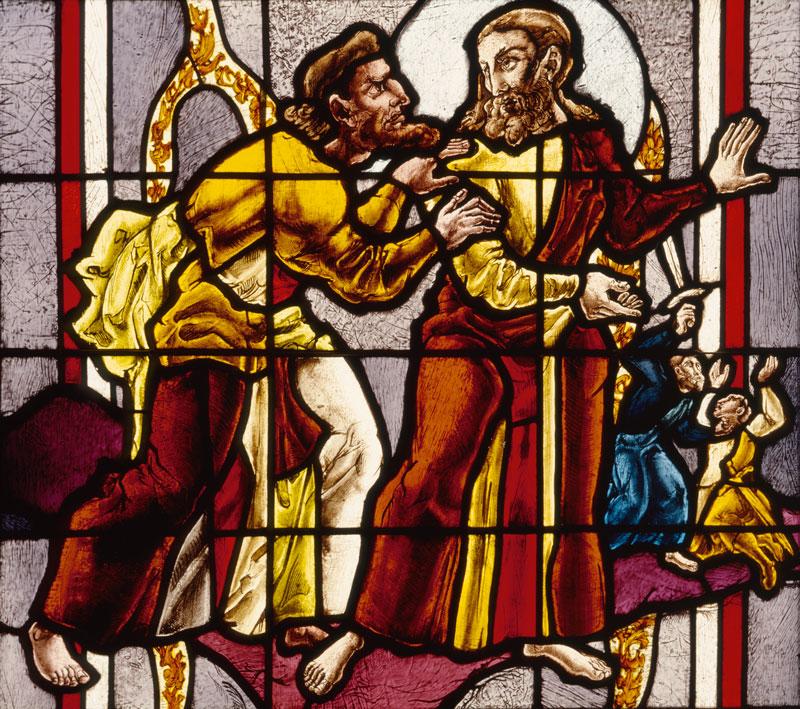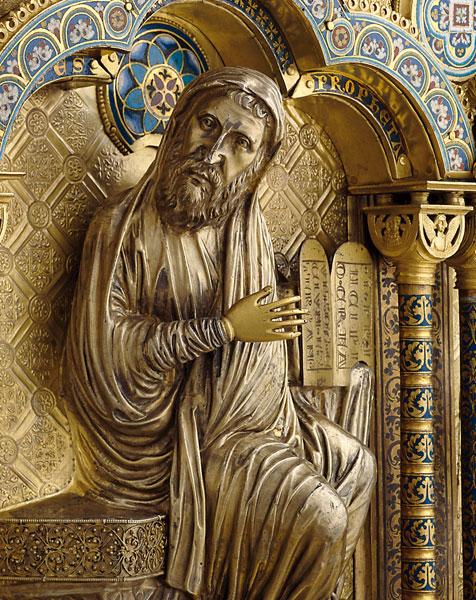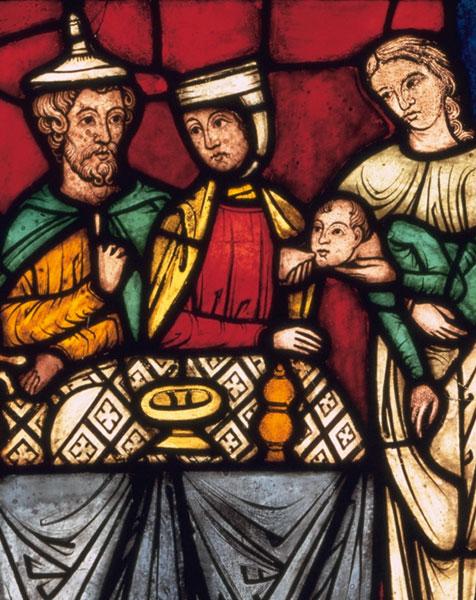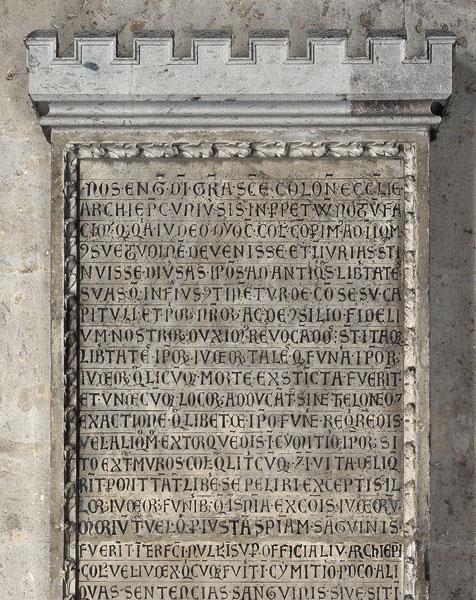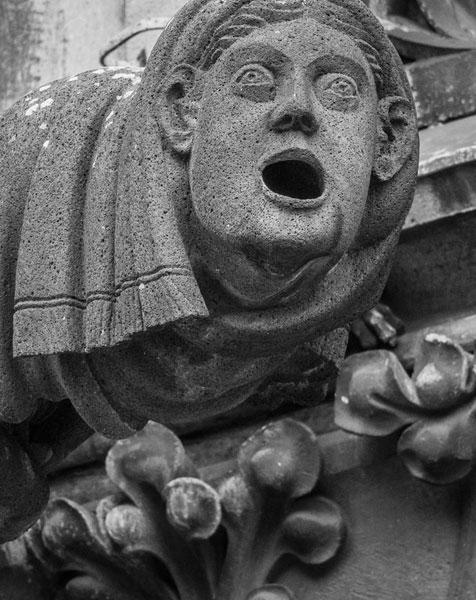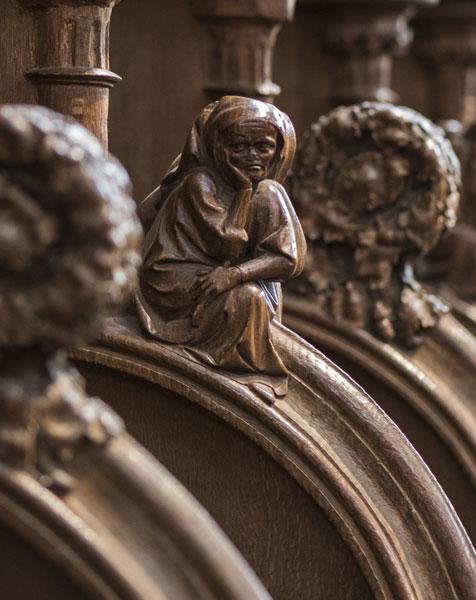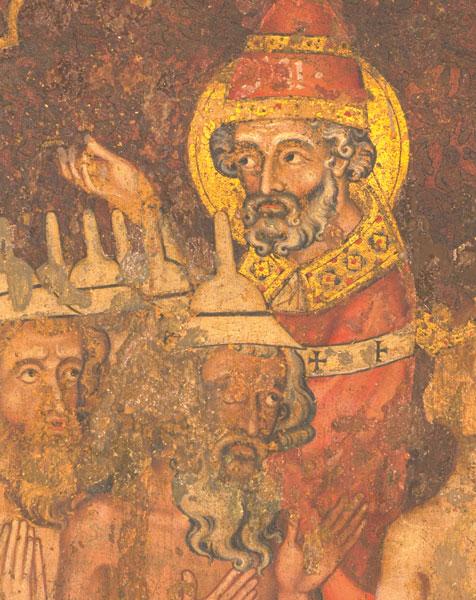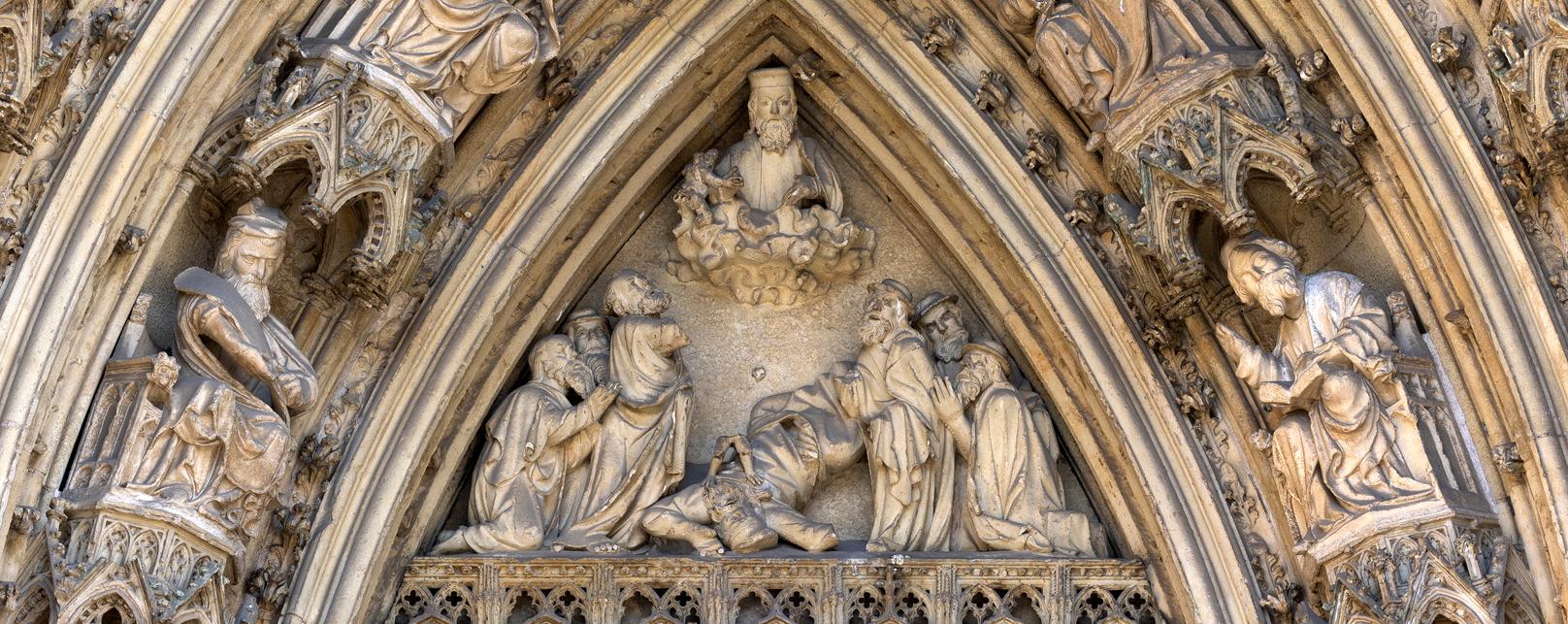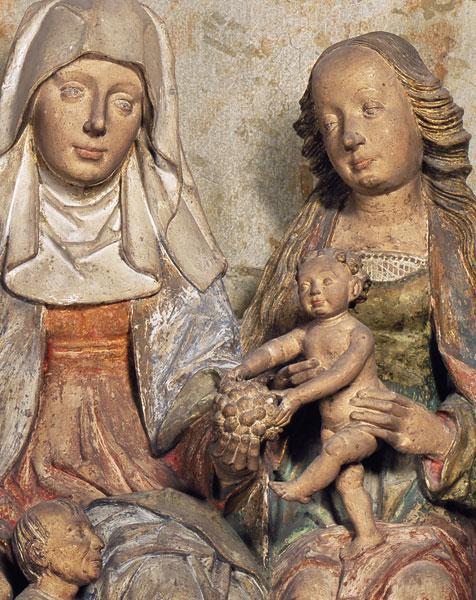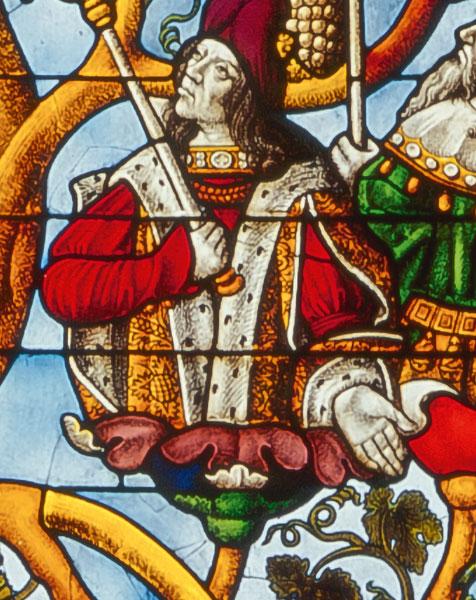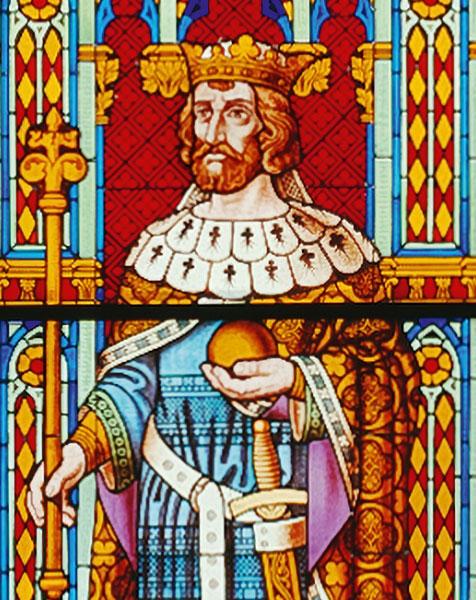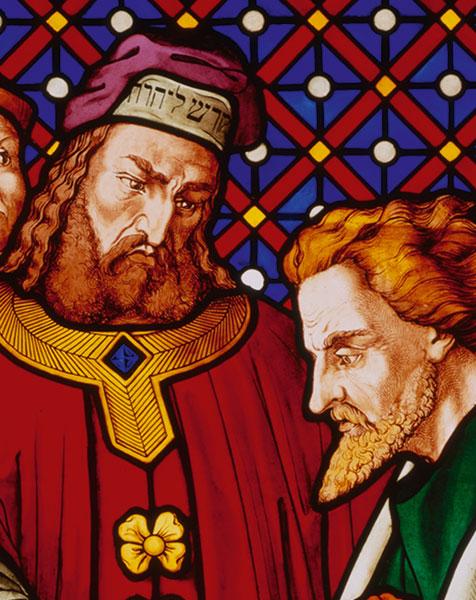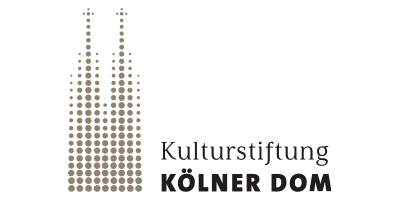
Cologne Cathedral and 'The Jews'-The children of Cologne window
After the celebrations marking the 700th anniversary of the start of the cathedral's construction in 1948, it was decided that Cologne Cathedral should have a window that was donated by the children of the city. It was to replace a similar window dating from the nineteenth century that had been destroyed in the Second World War.
The images in the new stained glass window, which were based on designs by Bernhard Kloss, were made between 1960 and 1965. The four images in each row in the window show a scene from the Old Testament, two from the New Testament, and one post-Biblical or contemporary image. Most of them have a link to children and are—just like the typological Bible windows—thematically related to each other.
Two panels show the suffering of the people of Cologne—and in particular the children—during the bombardments of World War II. The victims of the Nazi regime, on the other hand, do not feature at all. As recently established, the window is, in this way, testimony to the fact that Germany's early post-war society was not willing to recall the crimes committed during the Nazi era.
In addition, the window features a number of plainly anti-Jewish and anti-Semitic clichés. Jesus' Jewish adversaries are shown with contorted features, as they had been both in portrayals of Jews since the Middle Ages and in the inflammatory, anti-Semitic Nazi pamphlets and propaganda produced just a few years before the window was made.
Two scenes reference Judas's betrayal of Jesus: the counting out of the 30 pieces of silver and the Kiss of Judas (Matt. 26: 14–16, 47–50). In the first scene, the emphasis is on greed as the base motive for Judas's betrayal. What is even more problematic, however, is the context in which the Judas scenes appear. The other two scenes in the row are the sale of Joseph by his brothers (Gen. 37: 1–36) and a mother fleeing the bombardment of Cologne with her children. The link between the three Biblical scenes, which have betrayal as their theme, and the scene of the fleeing mother and children picks up on a lie propagated by Nazi propaganda that claimed Jews were behind the air raids on Germany. The fact that such images were possible in 1960s Germany and were either not recognised or not questioned at the time by those in positions of responsibility is both shocking and shameful.
Matthias Deml
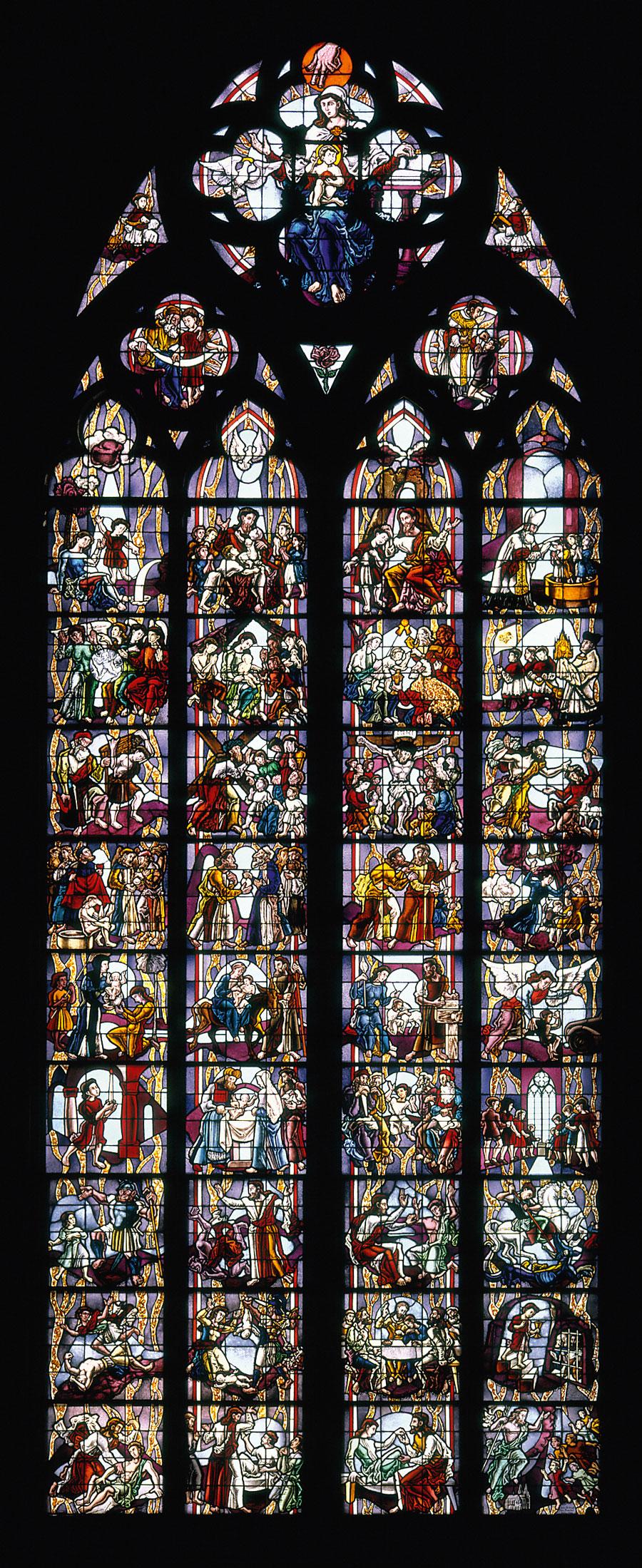
This scene emphasises that greed was the base motive for the betrayal. The contorted faces of Judas and the priests are antisemitic clichés.



